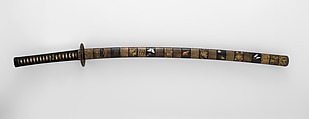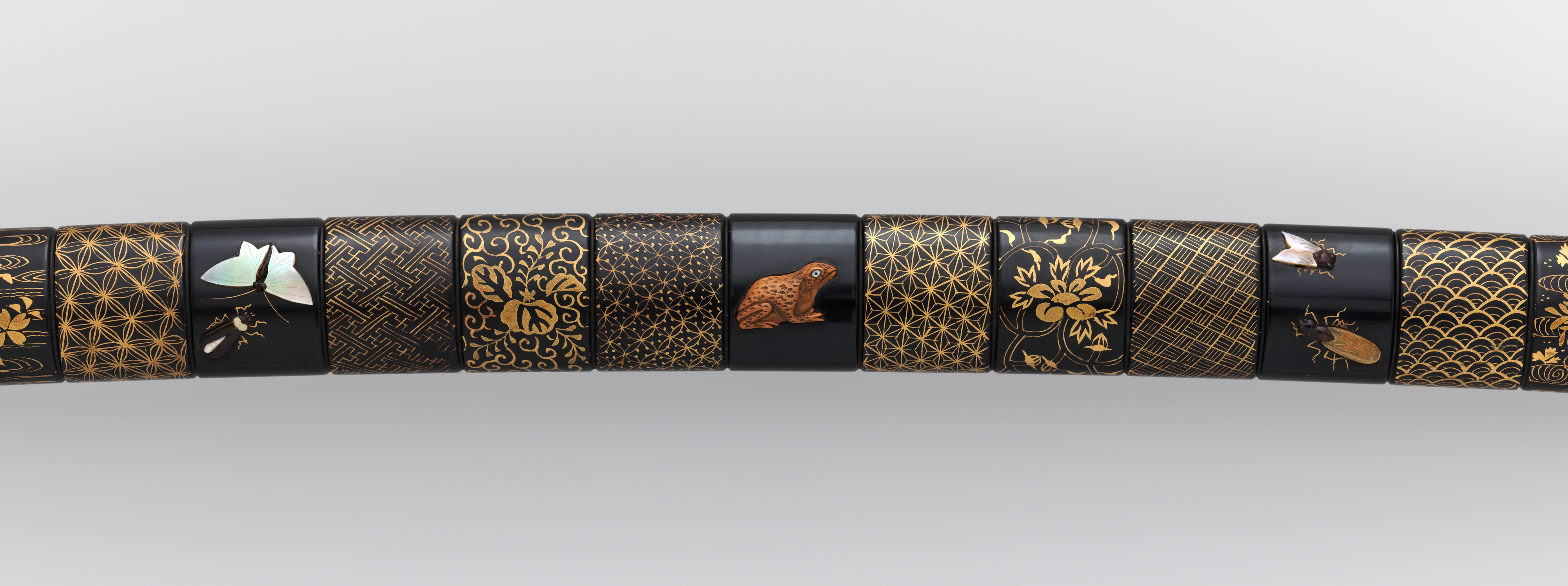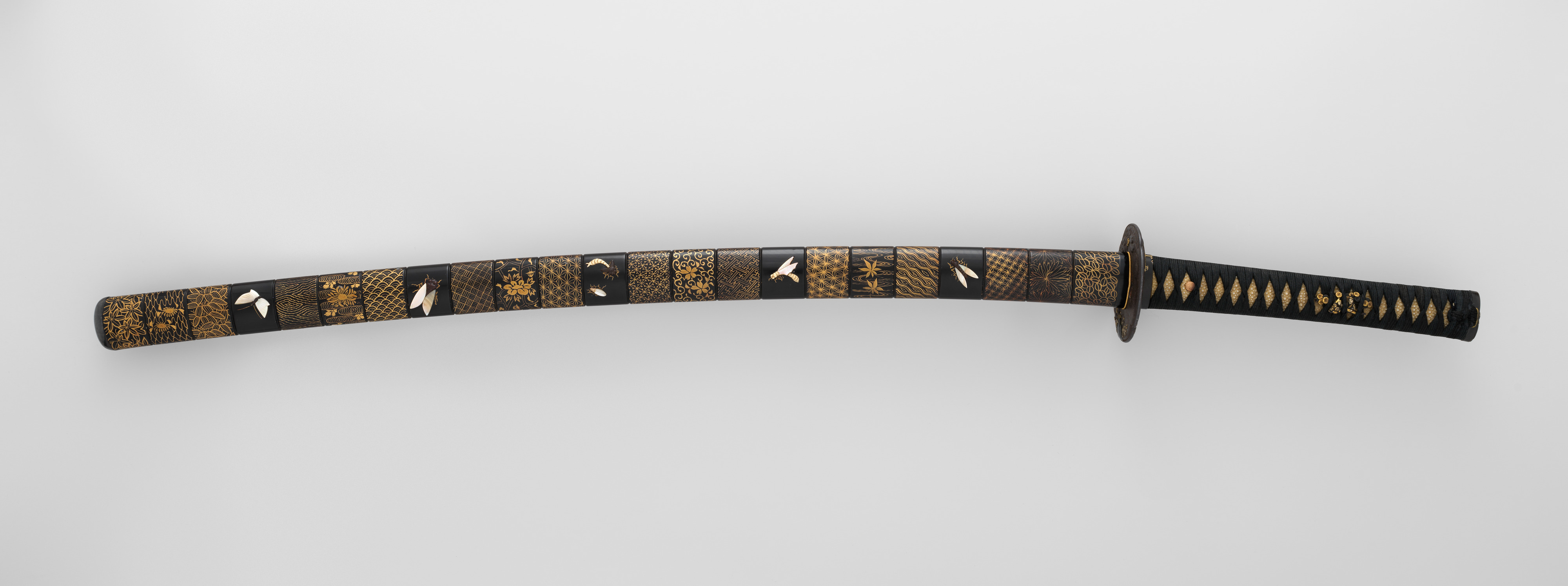印籠刻昆虫図螺鈿据文象嵌鞘打刀拵 Blade and Mounting for a Sword (Katana)
Not on view
This mounting features a scabbard with twenty-three striated sections. Eighteen of these are each finished in a different gold lacquer design, including geometric patterns, running water, chrysanthemums, and cherry blossoms, while the remaining five are adorned with various insects and a toad. Mother-of-pearl was used for the wings of certain insects and the eye of the toad. Made in the early Meiji period (1868–1912), the mounting displays the highest level of lacquer workmanship of the time. This style of scabbard originated at the turn of the eighteenth century, when the affluent Genroku period (1688–1704) gave rise to luxurious sword mountings.
This image cannot be enlarged, viewed at full screen, or downloaded.
This artwork is meant to be viewed from right to left. Scroll left to view more.




